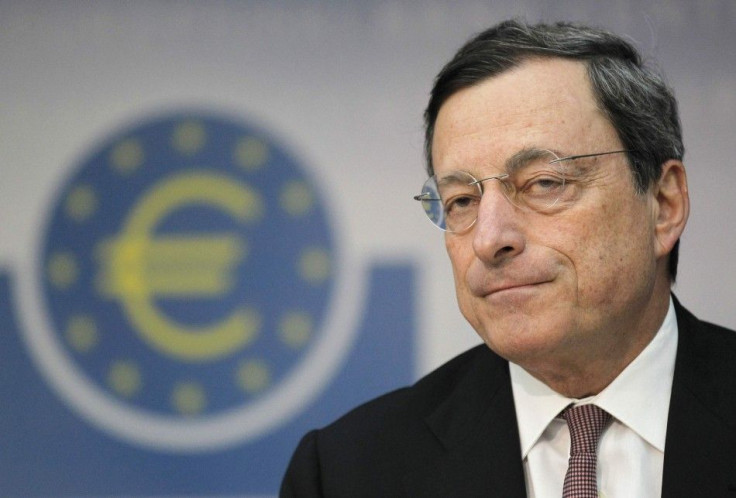Spanish, Italian Bond Yields Rise as 'Draghi Effect' Wanes And European Financial Crisis Heads For Next Tipping Point

A rally in the sovereign debt markets fueled by promises from the European Central Bank leadership earlier this year to “do whatever it takes to preserve the euro” is running out of steam, as the markets increasingly seem to signal a lack of confidence in the ECB's plans.
Meanwhile, as Bloomberg News reported on Tuesday, investors who took the contrarian view earlier this month and loaded up on assets whose price went down after the ECB’s plans were announced -- most notably German government obligations -- are setting themselves up for quick profits in any coming carnage.
It’s the latest tipping point in the nearly three-year-old sovereign credit and financial crisis in Europe, and it’s being measured one one-hundredth of a percentage point.
On Tuesday the yield on Spanish 19-year obligaciones -- a benchmark that indicates how much the long-term borrowing costs are for that government -- rose to 5.793 percent, a rise of nine basis points on the session. A basis point, also known as a pip, is one one-hundredth of a percentage point.
Yields on benchmark Italian BTPs for their part climbed to 5.192 percent. Those numbers are up from lows of 5.635 and 4.984 percent for Spanish and Italian bonds, respectively, earlier this month.
The slow, steady march up in borrowing costs for those two countries is a reversal of the trend seen at the beginning of September, when it was widely rumored -- and later confirmed by the institution itself after its Sept. 6 meeting -- that the ECB would start a bond-buying program aimed at helping periphery economies lower their borrowing costs.
Market-makers responded to the rumor and announcement by "front-running" the central bank and snapping up Italian and Spanish bonds.
In a Sept. 5 note to clients that commented on the rapidly falling yields for Spanish bonds and increased investor interest in buying those securities from the kingdom of Spain, Nicholas Spiro, managing director of Spiro Sovereign Strategy, wrote that “the positive result of today's auction, with the full amount sold and a sharp fall in the yields on all three maturities, has very little to do with what's going on in Spain. This is the Draghi effect at work."
The Draghi effect has, however, waned considerably since then.
The main issue is the fact that while the ECB offered a lifeline to the Spanish and Italian governments, it conditioned the help on representatives from those nations coming to Brussels, hat in hand, to ask for a bailout. In the initial market reaction, the expectation was that the aid request would happen right away.
In a Sept. 6 note, Goldman Sachs wrote that, essentially, the Spanish government was cornered, and “with a large (and uncovered) redemption looming at the end of October (and under pressure from other euro-area governments), we expect Spain to move towards seeking support” by Sept. 14.
That prediction did not come to pass, and Goldman later issued an errata that noted Spain "delays seeking EFSF support so as to meet domestic political constraints” and that “Spain may be delaying on account of the publication of bank-by-bank stress tests at the end of September.”
Spain is indeed seemingly looking to run out the clock, a situation that is -- ironically -- enabled by the very fact the market is expecting the bailout to eventually happen.
But between now and then, those that bet against optimism earlier this month are reaping the rewards.
“We are in a period where the ECB has laid down its framework to save the euro, but the fundamentals will ultimately creep back in, and you will see new problems flare,” Harvinder Sian, a fixed-income strategist at RBS, told Bloomberg News, talking up his bank’s strategy of buying German bonds on the cheap now and seeing them rise.
© Copyright IBTimes 2024. All rights reserved.




















